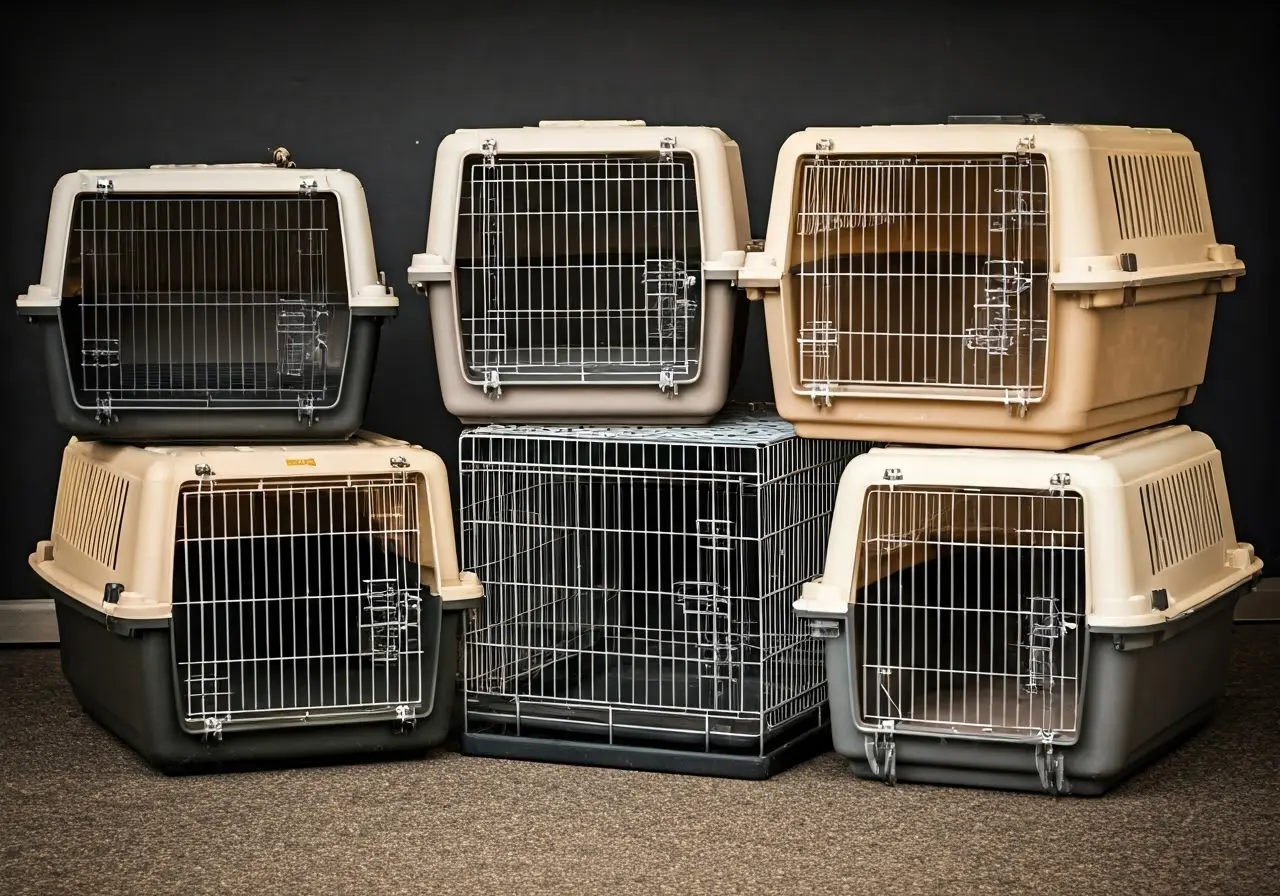Choosing the right crate size for your new puppy can be daunting, especially with the variety of options available. But worry not! In this guide, we’ll explore the key factors that help you make an informed decision, ensuring your furry friend is happy and comfortable.
1. Understanding Your Puppy’s Breed and Size
One of the first things to consider is your puppy’s breed and expected adult size. Different breeds grow to different sizes, and it’s important to choose a crate that can accommodate these changes. For instance, breeds like the Great Dane will require much larger crates than smaller breeds like the Chihuahua. Furthermore, understanding that a puppy’s growth rate can significantly vary is crucial. Consult breed-specific resources when making your decision, or explore our Guide to Choosing a Dog Crate for a tailored overview. This will give you insights into choosing a crate that facilitates comfort and movement for your puppy, both now and as they grow into adulthood.
Besides considering the breed, it’s wise to think about the individual characteristics of your puppy. Puppies of the same breed can differ in size; some may grow faster than others. Keeping these slight variances in mind will ensure that you invest in a crate that suits your unique pup. For example, working breeds often benefit from slightly larger crates that allow them to move more freely, which aligns with their energetic nature. This consideration is particularly vital during the first year when puppies experience the most growth spurts.
2. Allowing Room for Growth
Puppies grow quickly, so it’s crucial to select a crate with enough room for them to grow into. Ensure there’s enough space for your pup to stand up, turn around, and lie down comfortably. According to our 8 Tips for Selecting the Right Crate Size, adding an extra few inches to their current size is a good rule of thumb. This not only accounts for their immediate comfort but also ensures the crate can accommodate them through various stages of growth. Remember, a crate that’s too small can hinder their development, while one that’s too large may not provide that cozy, den-like atmosphere they naturally seek.
3. Considering the Crate Purpose
Think about how you intend to use the crate. Is it for travel, house training, or as a safe space at home? The crate’s purpose will influence the size, style, and material you choose. For instance, if you plan to use the crate primarily at home, you might opt for one that aligns with your interior decor and provides more space for your puppy. Alternatively, for travel, a secure and lightweight model is ideal. If you travel often, consider airline-approved crates which are designed specifically to meet travel regulations, ensuring both safety and comfort for your puppy.
Different usages require different features. For instance, if the crate will serve as a training tool, you might benefit from one with a built-in divider so it can adapt as your puppy grows. This feature is particularly advantageous during house training, where managing space to discourage mess is key. On the other hand, a crate meant for travel should focus heavily on durability and ease of transport, including features like reinforced designs and handles.
4. Evaluating the Space at Home
Consider where the crate will be placed in your home. Measure the area to avoid purchasing a crate that’s too large or too small for the intended space. An ideal crate should fit comfortably within your living room or designated dog area without causing obstruction. Also, think about the temperature and environment of the location. Keeping the crate in a moderate climate spot away from direct heat or cold will maintain your puppy’s comfort year-round.
5. Checking for Adjustable Options
Some crates come with dividers, allowing you to adjust the space according to your puppy’s growth. This feature can be particularly useful as it provides flexibility and comfort as your puppy grows. Adjustable crates such as those from Pet Crates Direct offer a practical solution, saving costs on future upgrades. Not only do they adapt to your puppy’s growing size, but they also maintain a consistent, familiar atmosphere which can be crucial for their sense of security.
6. Prioritizing Safety and Comfort
Ensure the crate is made from sturdy materials and has no sharp edges. Comfort is just as important, so add a soft blanket or crate pad to make it cozy. Safety should never be compromised, so check for construction integrity and features such as secure latches. Enhancing the space within with soft, familiar items can significantly reduce anxiety. Additionally, incorporating a favorite toy or some chew toys can make the crate feel more like home, encouraging positive crate associations during training.
7. Budgeting Wisely
Crates come in a wide range of prices. Determine your budget beforehand, but remember not to compromise on quality for cost. A reliable crate is an investment in your puppy’s safety and happiness. While it’s tempting to cut costs, selecting a high-quality crate ensures longevity and reduces the potential for replacement due to damage. Cheap crates might end up costing more in the long run if they fail to withstand your puppy’s growing weight and activity levels. Balancing between budget and quality is key; look for options that offer the best value while fulfilling all your puppy’s needs.




